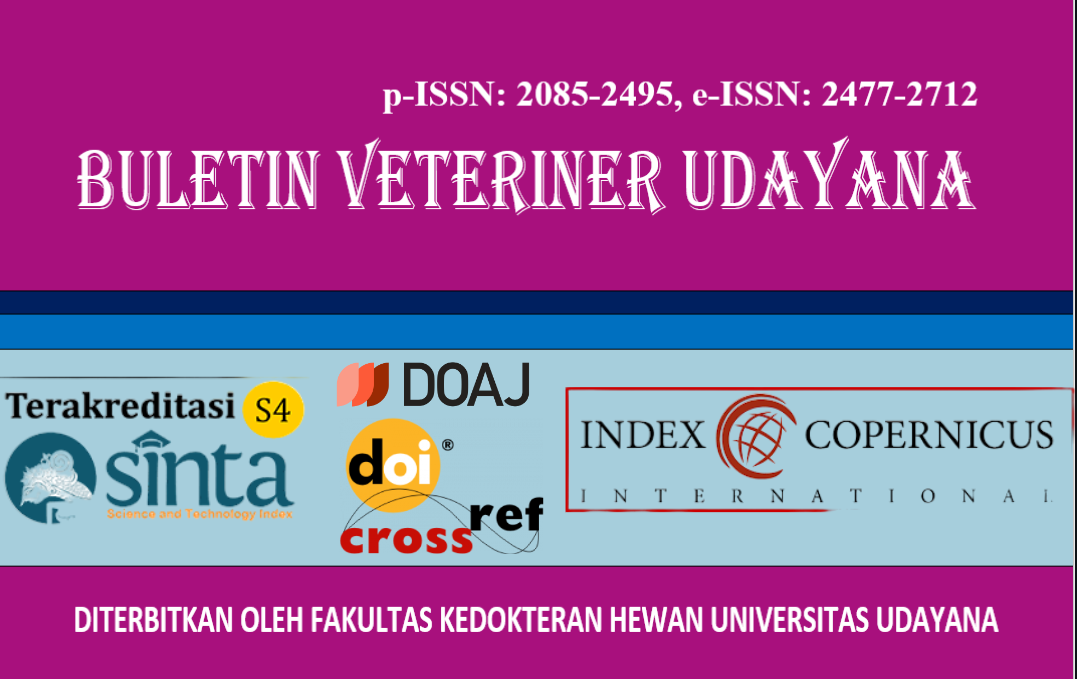PERCENTAGE OF EDIBILITY OF GOAT LUNGS BASED ON POSTMORTEM EXAMINATION DURING EID AL-ADHA 2024 IN JIMBARAN
DOI:
https://doi.org/10.24843/bulvet.2025.v17.i03.p05Keywords:
Lungs, Goat, Sacrifice, Postmortem Examination.Abstract
Carcasses and offal are a livestock slaughter product with high economic value, including lungs, which are widely consumed in Indonesia, especially during Eid al-Adha. However, since the lungs play a role in the animal’s respiratory system, this organ is susceptible to various diseases, such as tuberculosis and anthrax, which have zoonotic potential. Therefore, this study aims to determine the percentage of carcass feasibility (lungs) of sacrificial goats distributed to the community during Eid al-Adha 2024 in Jimbaran based on the final decision of the postmortem examination. This study was conducted through postmortem examinations on goat lung organs, assessing shape, color, consistency, and odor. The examinations were carried out at seven slaughter locations in Jimbaran, with a total of 25 lung samples. The results showed 15 out of 25 samples were suitable for human consumption, 1 out of 25 samples was rejected for human consumption, 6 out of 25 samples were suitable for consumption after removing the unfit parts, and 3 out of 25 samples were suitable for human consumption after undergoing special treatment in the form of heating. Based on this study, it can be concluded that goat lungs from sacrificial animals during Eid al-Adha 2024 in Jimbaran were mostly suitable for human consumption, with a percentage of 60%, 24% suitable for consumption after removing the unfit parts, 12% suitable for consumption after undergoing special heating treatment, and only 4% rejected for human consumption. It is recommended to strengthen both antemortem and postmortem inspections, particularly focusing on internal organs such as the lungs, to detect early signs of disease. This approach is expected to minimize the distribution of organs that are unfit for consumption and increase the percentage of goat lungs that meet the standards of safe, healthy, wholesome, and halal.




